Spring 25
Farah Al Qasimi, BLESS, Kea Bolenz, Reece Cox, Benjamin Lallier, Laura Langer, Joshua Tarelle Reid & Ross Alexander Payne, Jan Vorisek
Opening:
24 Apr 2025, 6–9 pm
Konzert:
Marshall Vincent
2 May 2025, 7 pm
Chapel, Kaiser Wilhelm Memorial Church
CCA Berlin is pleased to present Spring 25—a group exhibition featuring new and existing works by Farah Al Qasimi, BLESS, Kea Bolenz, Reece Cox, Benjamin Lallier, Laura Langer, Joshua Tarelle Reid & Ross Alexander Payne, and Jan Vorisek.
Spring 25 continues CCA Berlin’s annual focus on artists living and working in the city (plus one person we wish were here), who bring unique and nuanced voices to Berlin’s constantly evolving, polyphonic cultural scene. Through site-specific or site-altering works, Spring 25 engages with the architecture, location, and broader socio-historical context of the exhibition space with a twist, proposing humorous, contemplative, evocative, and intimate ways to reorient ourselves in the present.
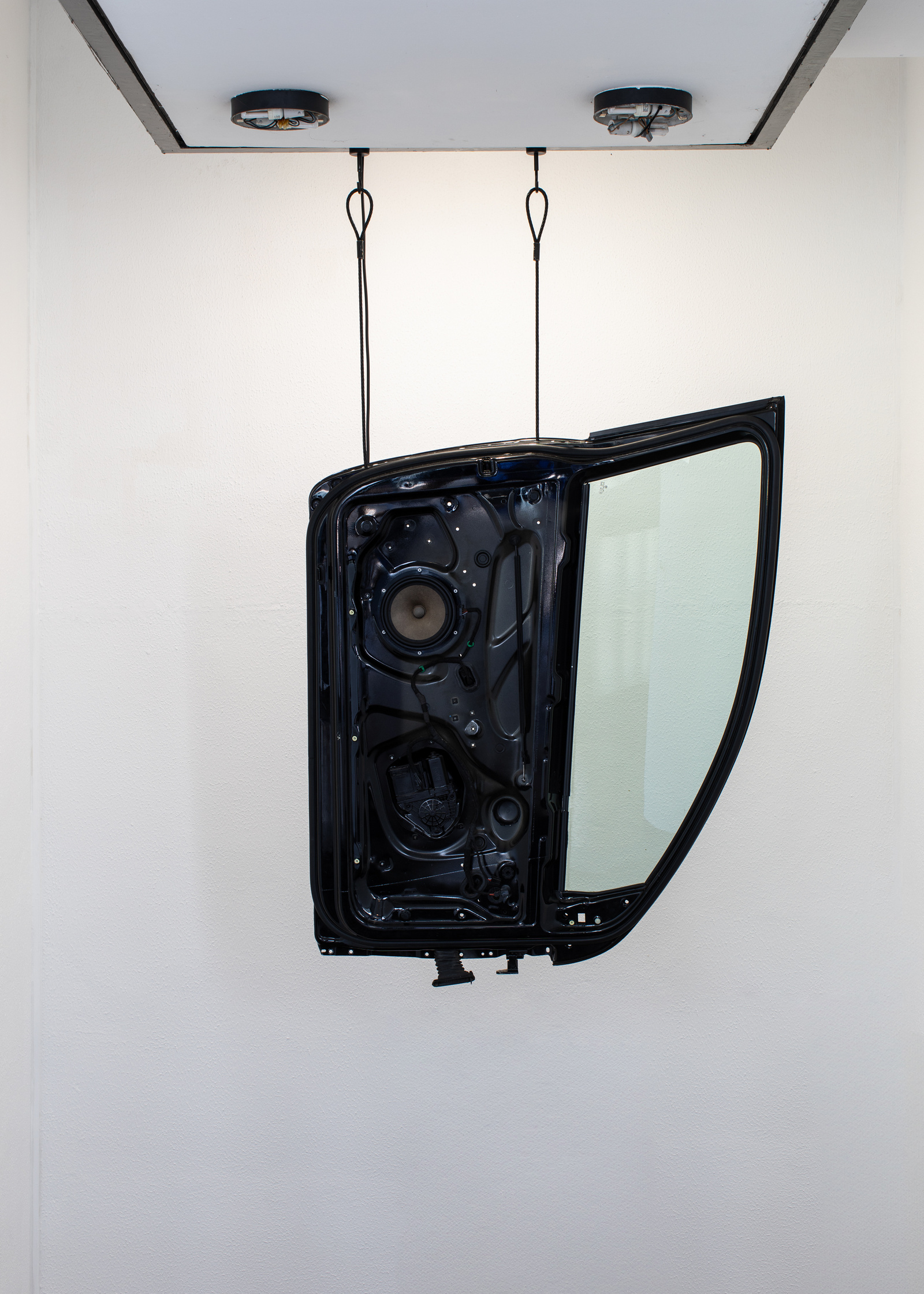
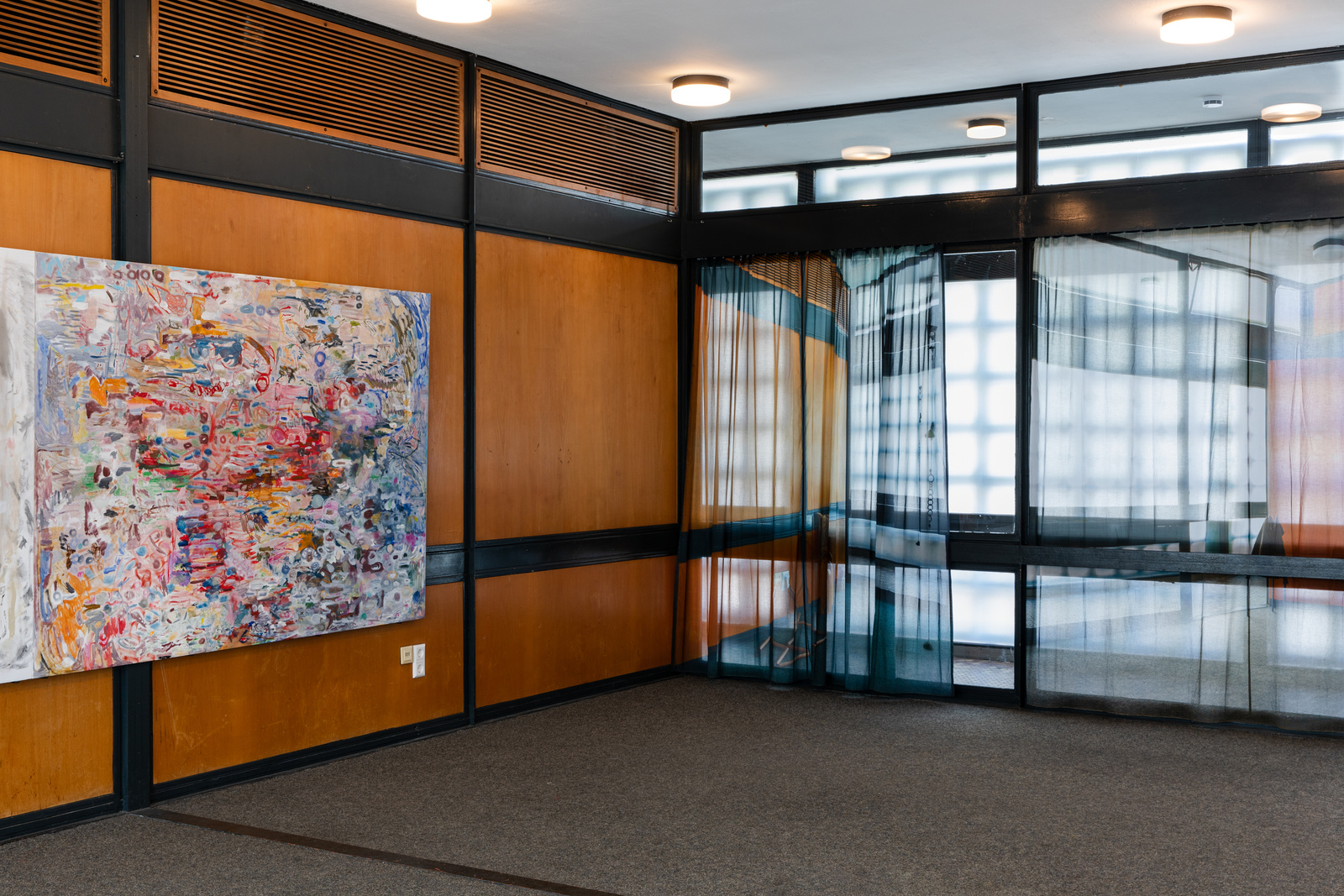
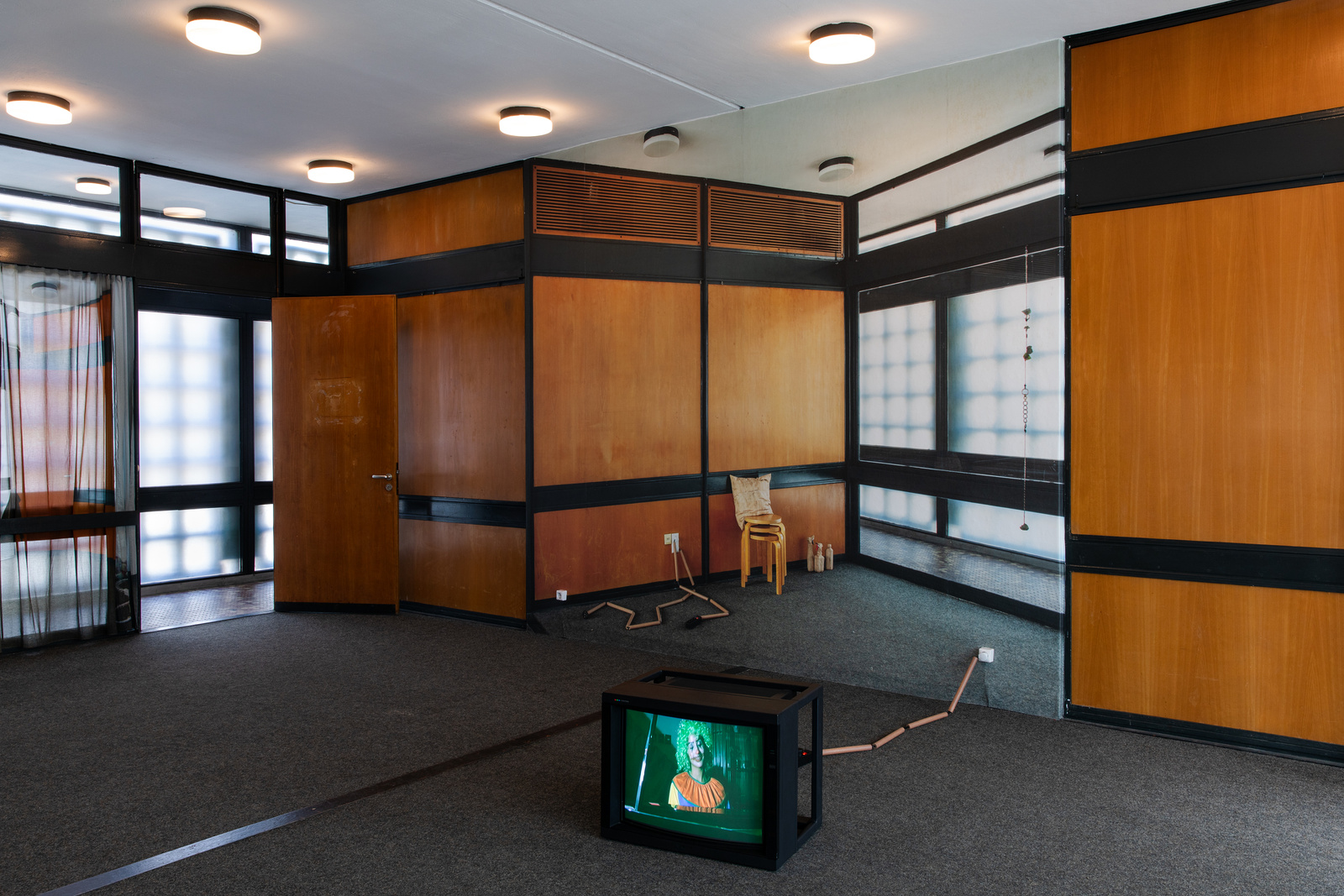
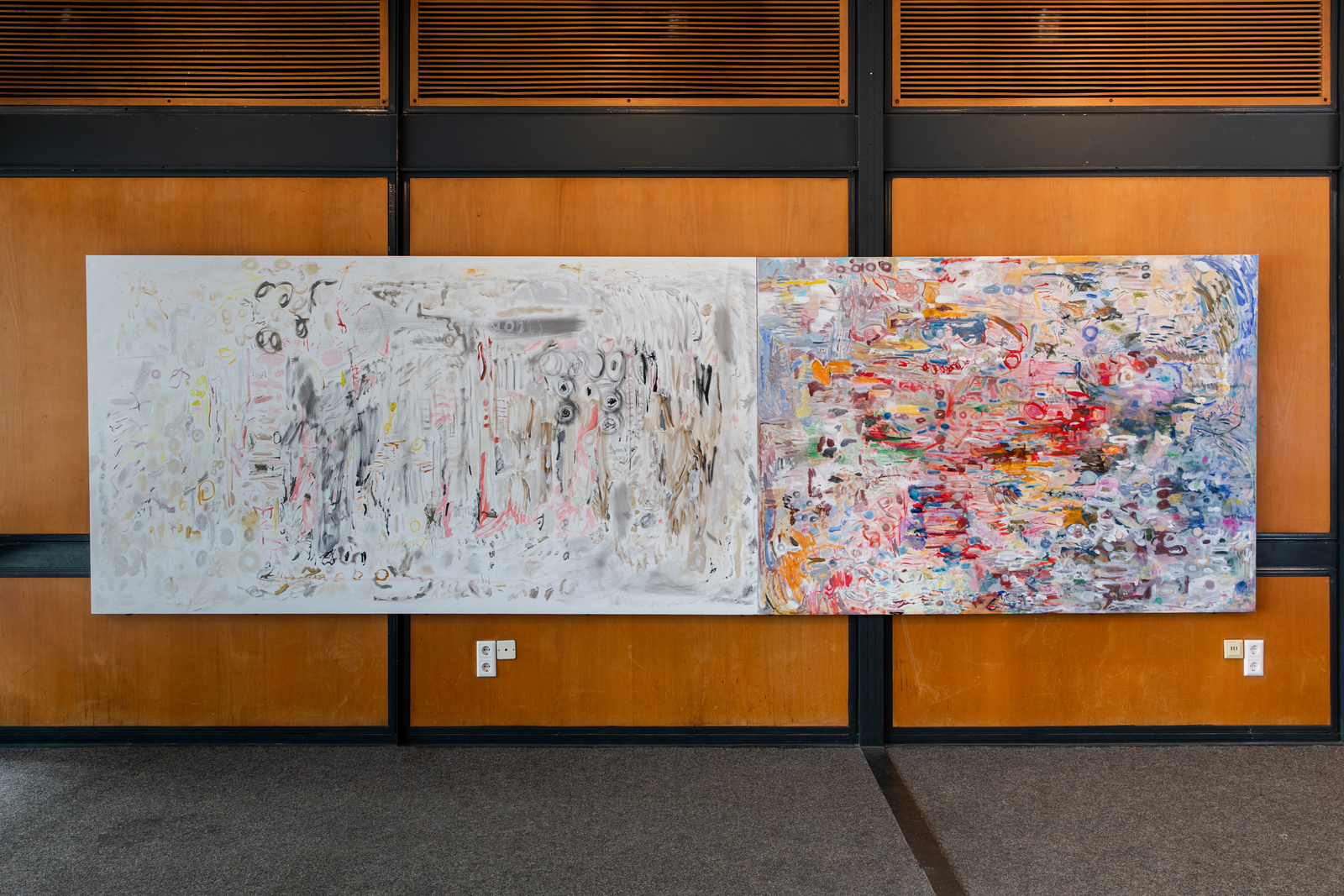
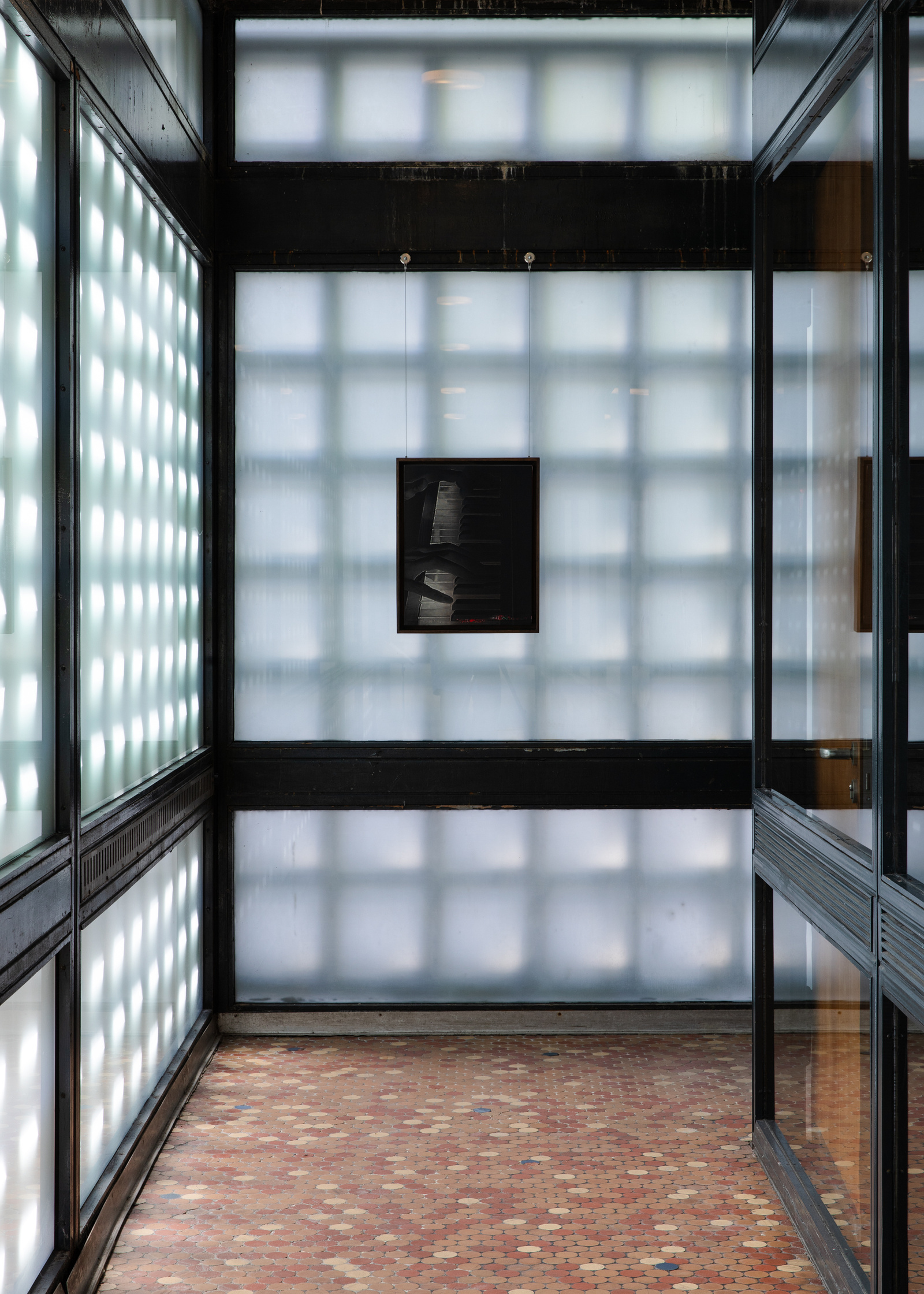
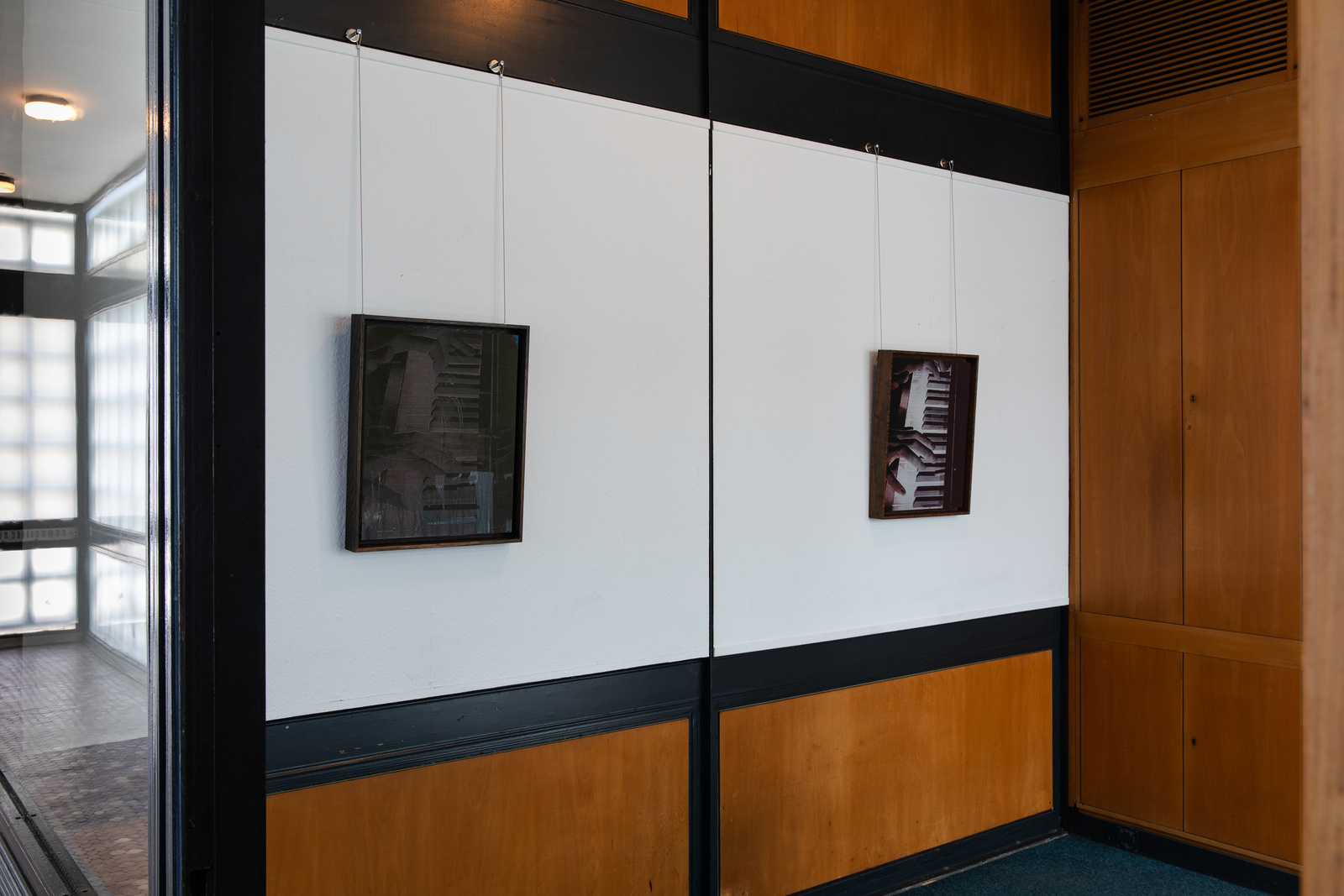
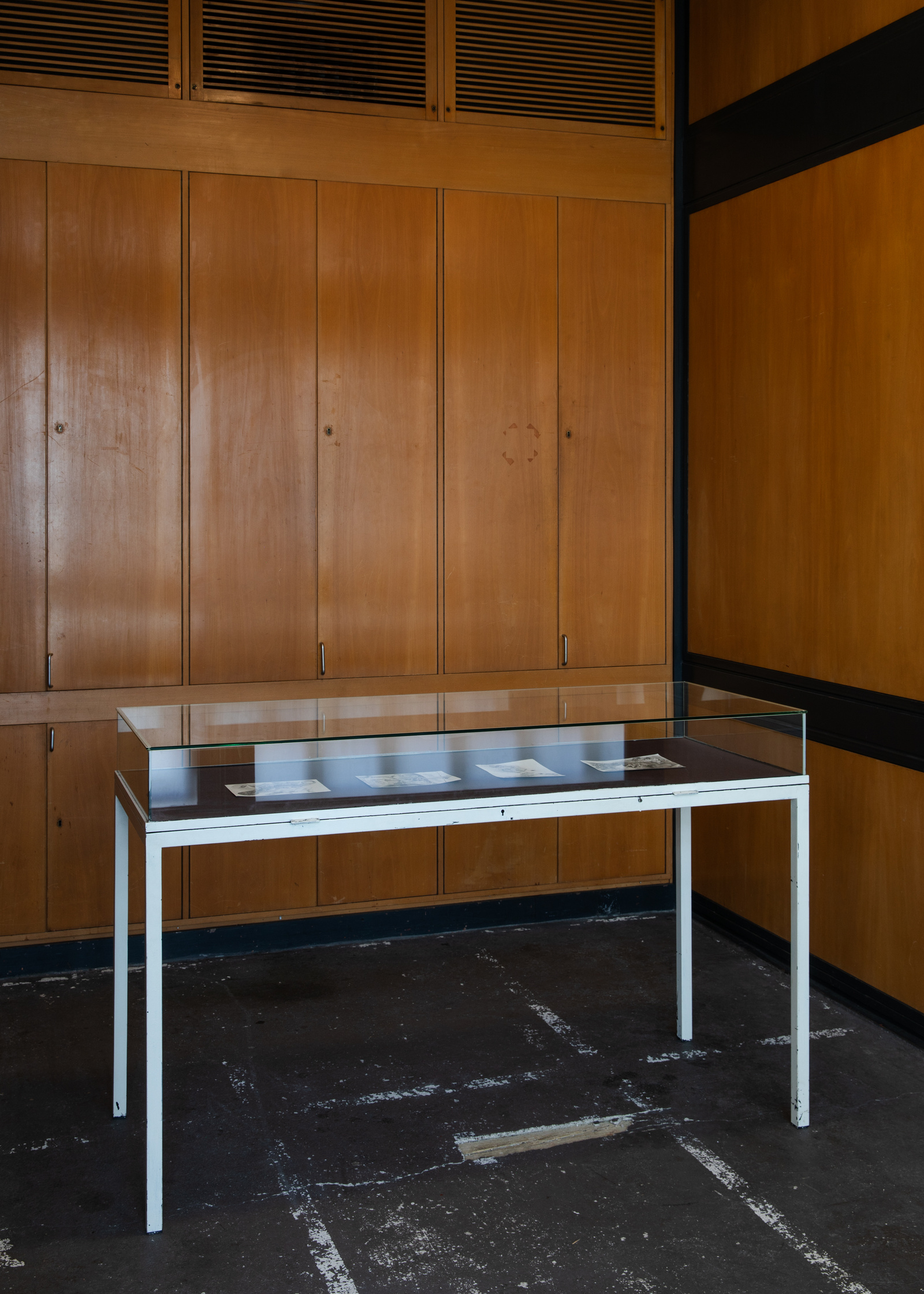
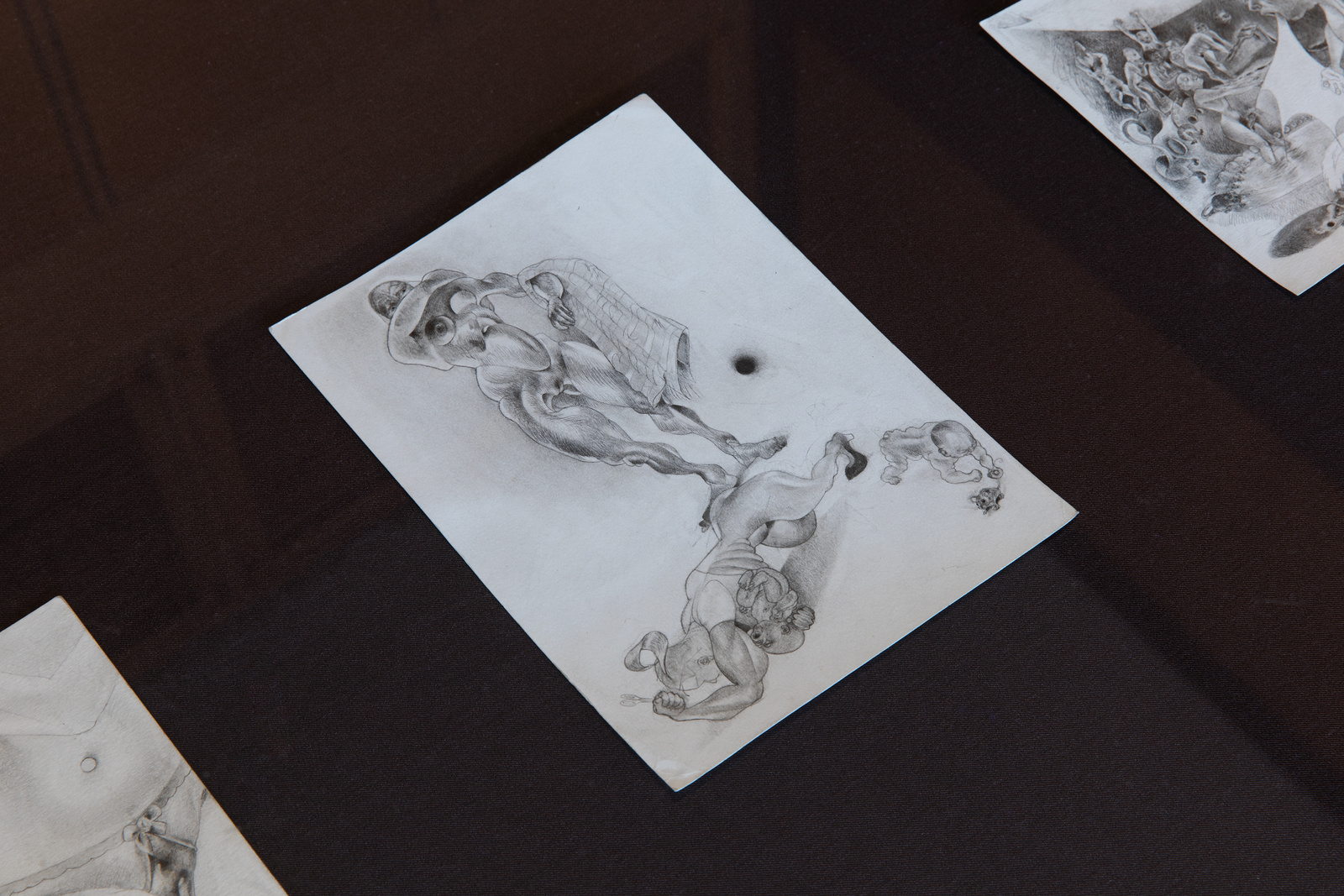
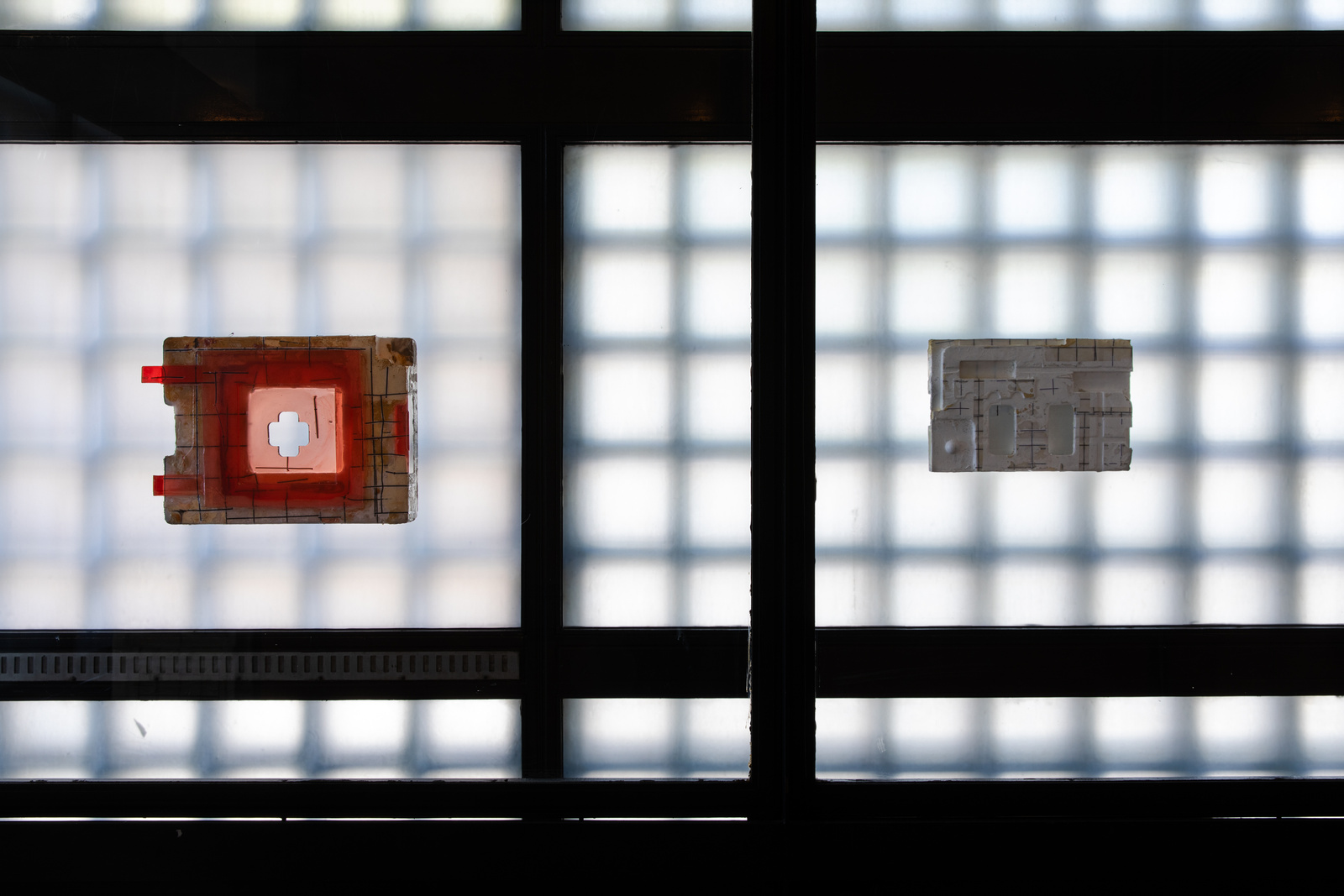
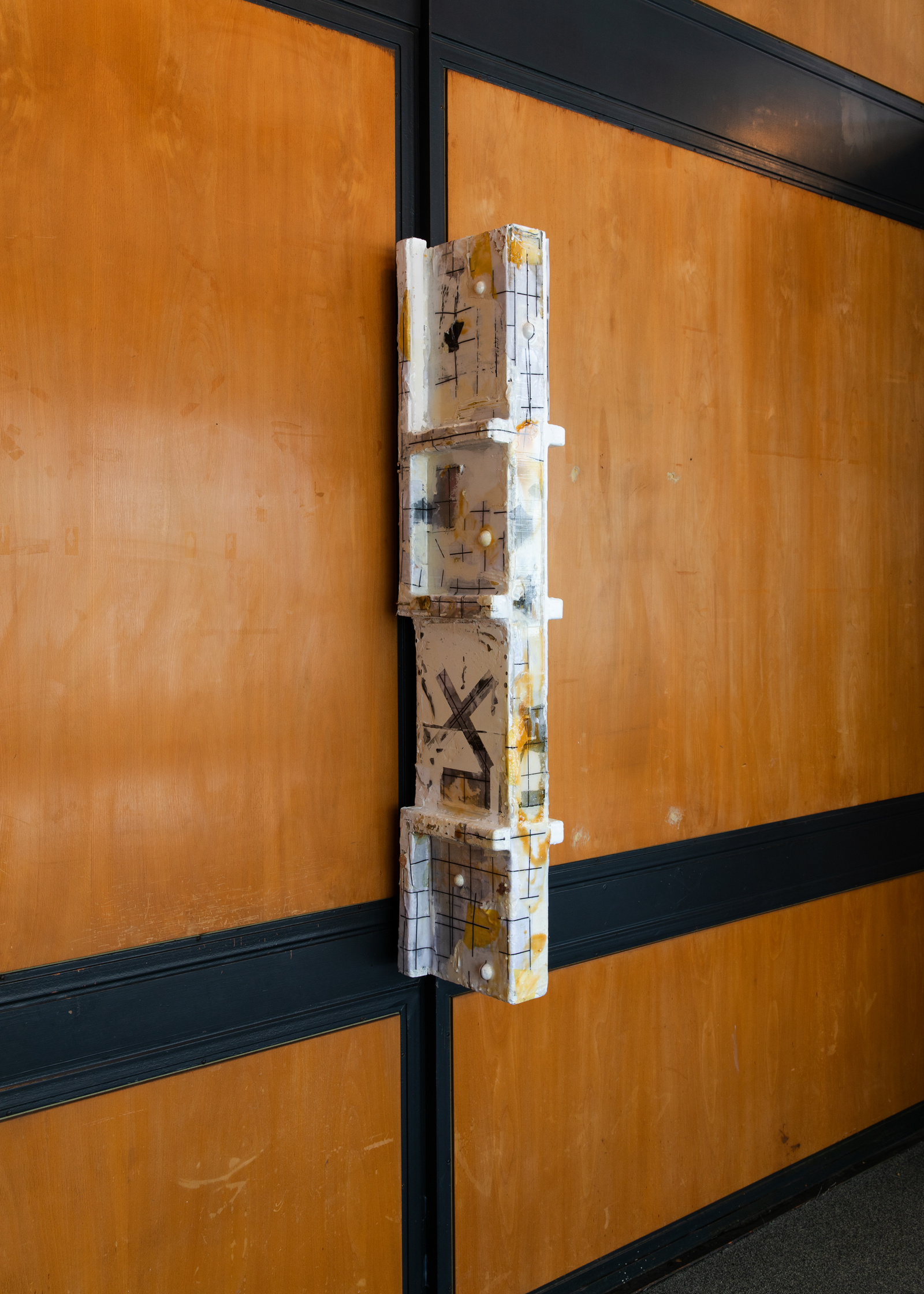
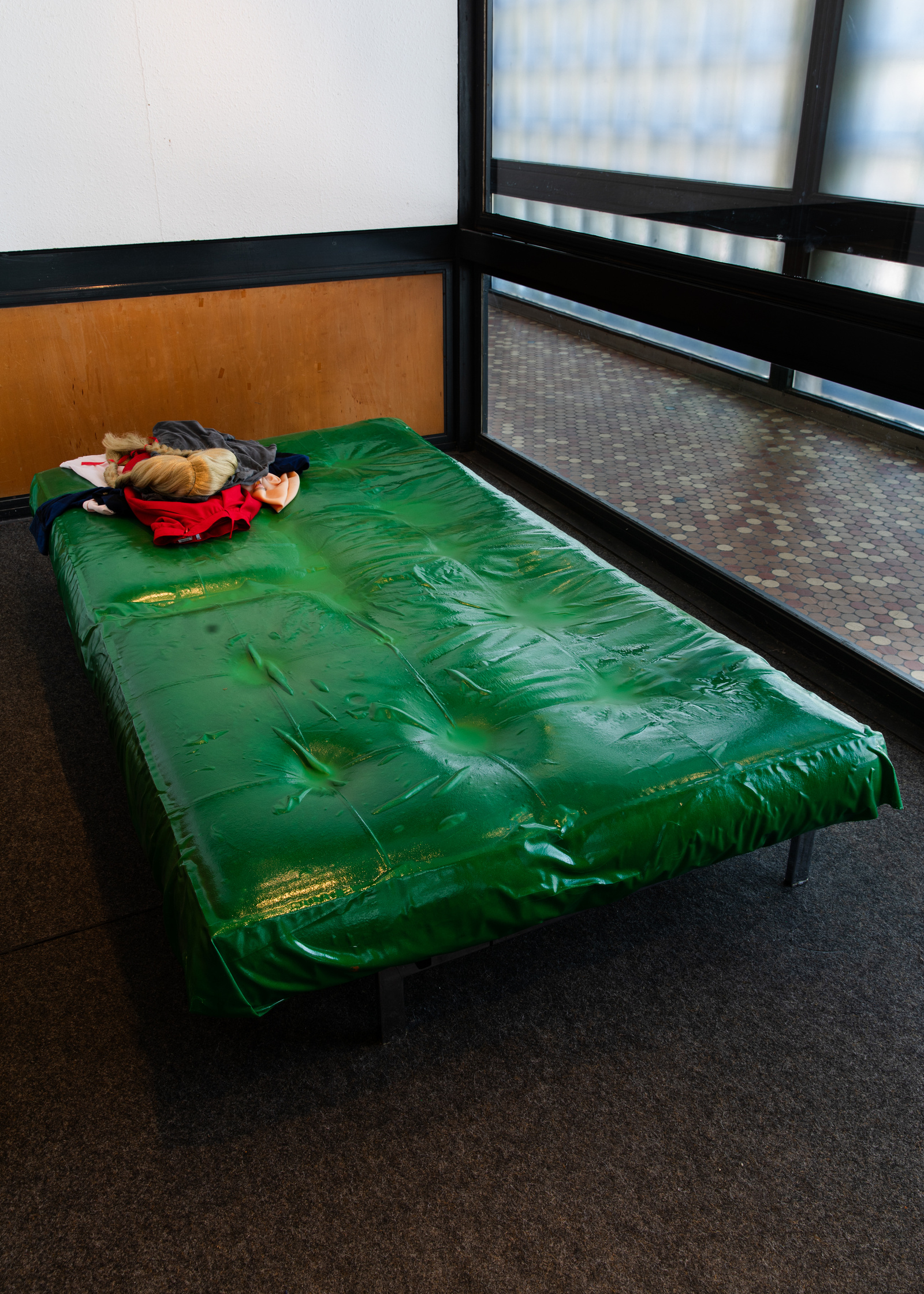
Spring 25, Exhibition view, CCA Berlin, 2025. Photos: Diana Pfammatter/CCA Berlin
Farah Al Qasimi is an artist working between New York and Abu Dhabi. Working primarily with photography, video, and performance, Al Qasimi creates images that capture the surreal, hyper-saturated, and often dizzying aesthetics of contemporary life. Through her lens, she explores themes such as cross-cultural identity, the everyday dynamics of power, gender roles, and taste, as well as the disorientation stemming from colonial history, migration, and consumer culture.
In her 2022 video work, Alone In A Crowd (King of Joy), Al Qasimi improvises on the piano while dressed in a clown costume, revealing and concealing a range of emotions beneath the mimicry of joy.
BLESS is an artist duo consisting of Désirée Heiss and Ines Kaag, who have been working together since 1996. They describe themselves as “situation designers,” blending fashion, art, architecture, business, and social practice. Their approach to everyday objects is rooted in the conviction that the present can be shaped in ways that enable a future worth living. BLESS consistently questions their role as designers of their environment and critically evaluates the necessity of the products they create.
For CCA Berlin, the situation designers have developed a site-specific installation tailored to the exhibition space. The central element is the specially conceived N°29 Wallscape #40 Woodwonder CCA—a photographic snapshot of an interior space that has been temporarily furnished with products inspired by Egon Eiermann interiors. Since 2007, BLESS N°00 - N°29: Retrospective Home Run, BLESS has used life-sized photographs of its products within exhibition contexts. The wallscape, mounted on a wall surface in the CCA, reflects and expands the space, complemented by two printed, semi-transparent curtains—the N°81 Woodwonder Curtains CCA. Various N°81 Woodified Objects leave the picture and find their way into the building as usable objects. The situation design alternates between everyday reality and its subtle irritation; it picks up on existing spatial situations and reinterprets them by shifting perspectives and spatial superimposition. Image surfaces merge with real space and create a multi-layered structure in a dialogue between two- and three-dimensionality, anchored in the language of the Egon-Eiermann-Bau.
Kea Bolenz’s delicate pencil drawings present the small world of man as a miniature of the universe. The format of the drawings requires the viewer to get very close. It forces a kind of intimate confrontation, which is just as inherent in the physical proximity as in the motifs themselves: The works show scenes of eroticism and alienation, depicting twisted creatures, seemingly arbitrary junk, meaningless references and humorous twists.
The everyday mixes with “perverse” fantasies, in which social and physical sensations of disgust generate deviant pleasures. In the context of contemporary phenomena such as isolation and disembodiment, this type of artistic exploration can be understood as an existential revolt.
The drawings offer a sensual resistance to the increasing shift of human experience into the virtual by thematically engaging with intimate, corporeal dimensions of human existence and in creating a viewing situation demanding quiet, undivided attention.
Reece Cox is an artist, musician, and writer based in Berlin. He has performed and exhibited solo and collaboratively at Magenta Plains, NY; Neue Galerie Gladbeck, DE; House, Berlin; September Sessions, Stockholm; Shahin Zarinbal, Berlin; Sara’s, New York; Gisela Capitain, Cologne; and others. Reece Cox’s project Poser is a fictional music group without fixed members. By adopting and simultaneously deconstructing the band as a readymade cultural form, Poser serves primarily as a vehicle for producing images and live performances that challenge and contaminate notions such as artistic authenticity, experimentation, and performativity. In recent years, Poser has appeared at Sara’s, New York, KW, and Roter Salon der Volksbühne, amongst others.
At CCA Cox presents three new works on wood panel, exploring the potential of performance to be an engine of image production, and image production to be an engine for variation, even within limited working principles. Across three panels Cox deploys a wide range of screen printing techniques to produce markedly unique renderings of the same image—a film still of collaborator Steve Katona playing harpsichord in his home. Like Poser, these works raise questions of an image’s authenticity and demonstrate how an image is fundamentally changed with every reproduction.
Benjamin Lallier lives and works in Berlin. The artist’s versatile practice is rooted in an exploration of the human desire to experience life—reflecting upon our ability to project our aspirations and dreams, often blindly, onto places, objects, ideas, and other people. As a result, he critiques social structures and allusions of idealism. His satirical examinations take shape in the form of paintings, sculptures, and installations that appropriate references from a disparate range of historical and contemporary sources—Bruegel’s paintings of dancing peasants, Brechtian theatre, Agnes Martin’s theory on Beauty, or an image of porn-star-turned-actress Chloe Cherry, for example. Underlying Lallier’s practice is an interest in testing the limits between what is real and what is illusory. He often plays with the idea of seriality and repetition by working in series—where no image, or object, is ever the same.
Lying on the Grass comes from a mix of two very different references. The first is Manet´s Luncheon on the Grass, a painting that is important to the artist due to its refusal to conform to convention and Manet’s initiation of a new freedom from traditional subjects and modes of representation. Lallier subtracts the subject itself and reinforces its absence by displaying the costume on its own. The second alludes to a slang expression that describes a liar—technically defined as “a liar on green background,” referring to the green screen used in cinema and other media. The title Lying on the Grass combines these two references through its double meaning: being on the grass, or not telling the truth.
Laura Langer is a Berlin-based artist working primarily with painting. While working on a series of figurative works in her studio, Langer would deliberately set aside a separate canvas—a surface where she offloads excess paint. Layer by layer, these marks accumulate, giving rise to a series of abstract paintings titled Discharge Paintings.
In the exhibition text from her 2024 solo show Mothers at Ilenia, London, Langer explains: “The figurative painting is the mother of a Discharge Painting. A Discharge Painting is a place where the unwanted is welcomed, where I put the impulses not taken, where I clean my brush, where I can keep going. There is some justice in chaos when something ugly, unwanted at first, is exposed, revealed, and given value just by the fact of existing and insisting on its existence. It gains its right to live.”
Joshua Tarelle Reid & Ross Alexander Payne are Berlin-based artists from the North of England who work expansively with sound and sonic materials to explore themes such as labor, collective memory, intersections of class politics, and the social history of music subcultures. Joshua Tarelle Reid is a visual and sound artist living between Paris and Berlin. He is best known as one half of the experimental music duo Space Afrika. Ross Alexander Payne’s broad ranging practice spans sound art, music, visual arts, performance, radio art, installation, digital media, intervention, social practice, and education.
To Have Been A Part (Where Are We Today...) is an installation which uses spoken recordings of a selection of comments from online videos documenting British rave culture from the 1980s and 90s. The sound installation was first shown in 2024 outside the club Tresor on the building’s facade. Now relocated to CCA’s exhibition space adjacent to the Memorial Church, the work’s meaning shifts drastically, allowing its social historical context to unfold in a new site-specific setting.
Jan Vorisek works across sculpture, installation, performance, improvised music, and noise. Vorisek’s installations serve as site-specific commentaries, ephemera, or documentation—all aiming to examine formal hierarchies. Through assemblages consisting of used and found materials, as well as sound-producing devices, the artist reflects on the fluctuation of noise as a vessel for information. His practice extends to his work as a DJ and as an organizer of club and experimental music events, providing spaces for collective resonance while raising critical questions about subcultural dynamics. His work was exhibited in solo exhibitions at Arcadia Missa in London, Swiss Institute New York, Kunstmuseum Winterthur, Kunsthaus Glarus, Hard Hat Geneva.
Found and handmade styrofoam packing materials—like silent witnesses to our global consumer culture—are transformed via paint, latex, resin, xeroxed paper, and plaster into durable yet fragile objects. This process transmutes the ephemeral into the permanent, challenging notions of value and disposability. Patched with grid structures, they evoke brutalist architecture while existing in a state of temporal dissonance, triggering anxiety about environmental degradation. Originally designed to cradle flat-screen TVs, they now stand as a site-specific commentary on the cyclical nature of production, consumption, and obsolescence, reflecting the dystopian undercurrents of our digital age in the heart of a global tech economy.
Curators: Dounia Biedermann, Nan Xi, Mathis Neuhaus, Fabian Schöneich
Production: Franz Hempel